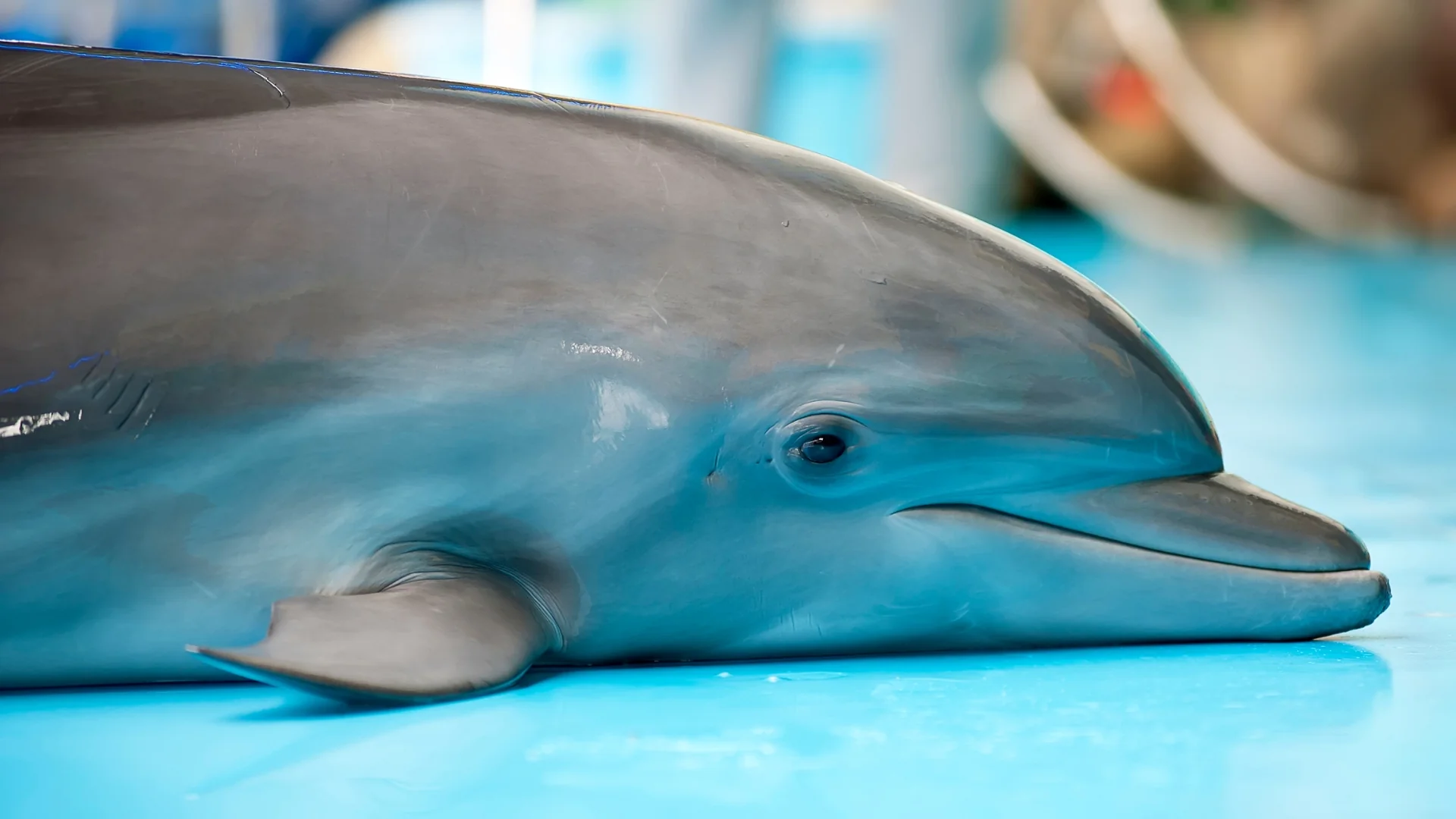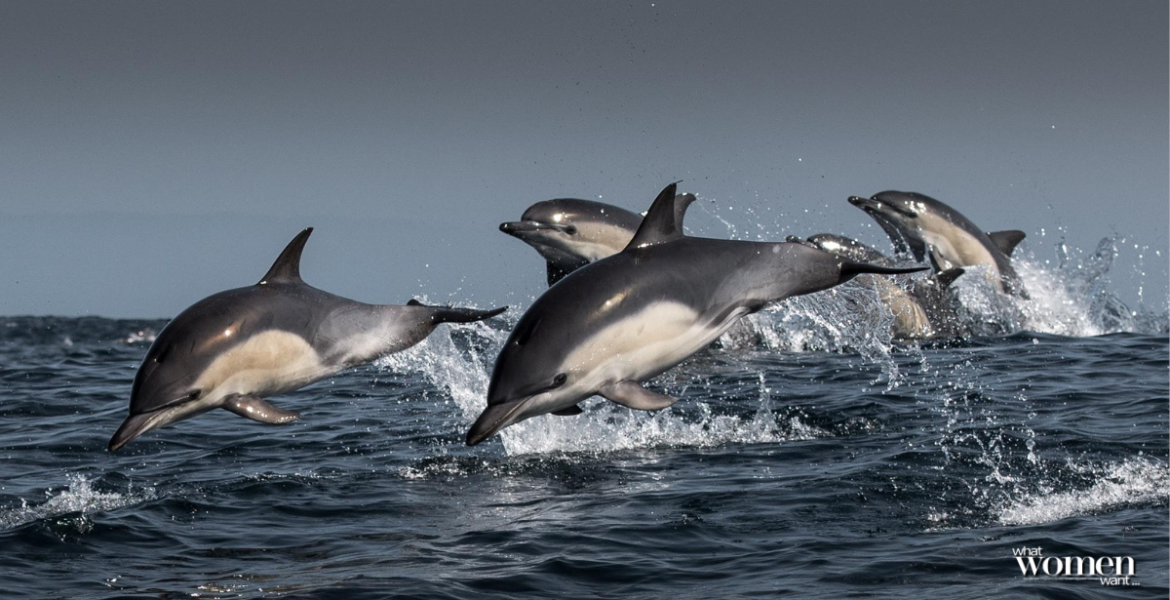How Our Love for Dolphins Funds Their Kidnapping, Captivity, and Exploitation
Ever wonder how paying for a dolphin smile fuels a sad industry? There are hundreds of thousands of sea creatures that exist, but it was dolphins that decided to show an interest in us. Furthermore, stories of them helping guide ships, saving people from sharks, or simply surfing with humans on high waves.
They found us interesting; we became fascinated by them.
Intelligent Creatures
We began to study them. We now know that they are extremely intelligent and that their brains are surprisingly larger and more complexly organized than humans. They actually have a highly developed system for emotions and empathy.
They also process sounds differently from humans. Not only do they have a significantly broader hearing range than us, with the ability to hear and produce ultrasonic frequencies. They can also use echolocation to “see” with sound. This is an incredible adaptation for their life in the seas and oceans. Sadly, at times, it also leads to their downfall.
We use it against them.
Dolphin kidnapping
As humans, we discovered their weakness. If we gathered enough fishing boats and placed large metal rods in the water and banged on them hard enough, we could scare and maneuver pods of dolphins wherever we wanted. We could surround them, chase them down, and eventually corner them. Then, we pick and choose the dolphins we want to send to dolphinariums and marine amusement parks. This is one of the many ways that we snatch the babies from their mothers. Babies that would have otherwise stayed around 4 years, inseparable from their mother’s side, swimming as one.
We take the younger ones to ‘train’ them. Because they are easier.
We transport them across continents to their “new facility”. Yes, many dolphins don’t make it.
We know dolphins live in complex social structures. They live with their families and form groups and friendships. When a baby is snatched from its mother, her frantic thrashes and calls are sheer panic. The panic of a mother who will never see her baby again, who she will grieve. We know we are ripping families apart. And we know it is sad, but we have so much more to gain.
The dolphin entertainment business

According to World Animal Protection, the worldwide dolphin show business generates an estimated $1.1 billion to $5.5 billion from dolphin captivity alone.
We are talking over 3,000 dolphins imprisoned in pools across the world.
For us.
To jump and dance.
To wave their tails.
Their delicate and complex sound processing systems withstand blasting music and loud cheering, and clapping crowds.
To earn their dead fish.
Every. Day.
For us.
Our beloved dolphins’ new life
We love dolphins, yet we pay for them to ‘entertain’ us. We pay for them to be captured from the wild or bred in captivity. Where they will never know what it was like to live wild and free in the vast oceans.
We take away their freedom. As a result, their right to swim in an open ocean for up to 160km a day. We stick them in a swimming pool with no escape. We confine them to a depth of around 4m, where they dive regularly up to 47 meters deep, with the ability to dive even deeper. Making them suffer the effects of living in chlorinated water, to deal with the fact that they are urinating and defecating in the same water instead of living in the open seas.
The Sad Reality
We limit their social interactions to a handful of dolphins that WE pick for them. If they don’t get along, they have no escape from each other. They live with the fights and carry the physical and emotional scars. If they are troublesome, we sedate them. The thrill of the hunt, chase, and variety of different food is replaced with dead frozen fish. This is how paying for a dolphin smile fuels a sad industry.
They get stressed and exhibit signs of depression, so it’s not surprising that they live much longer lives in the wild, despite what dolphinariums want you to believe. Hence, we take bright, beautiful brains that thrive on enrichment and life in the wild, stick them in concrete pools, and claim they are happy.
Our proof? They look happy with their trainers in the shows.
Don’t confuse the dolphin’s ability to bond with their trainers, their only source of food, for happiness. Similarly, their smiling faces are just the way their face look.
We can Do Better
If we really care for dolphins, we shouldn’t encourage this. We shouldn’t pay for a ticket that funds this industry of catching dolphins into captivity. Animals aren’t born to entertain us.
This year, Mexico approved a nationwide ban on dolphin shows and the use of marine mammals in entertainment. Further, I believe, one day, the practice of keeping dolphins, orcas, and other marine animals for entertainment will be a thing of the past, and this exploitation will be looked upon as a dark and ignorant time.
The Ethical Way to See Dolphins
 If we really need to see Dolphins up close, we can do so by going to them in their natural habitat. Look for dolphin watching tours that abide by the proper code of conduct in our very own Red Sea. For instance, if you find them mindful of keeping a safe distance, giving the dolphins their space, limiting the number of boats observing a pod of dolphins at a certain time, and being respectful of their natural sleeping times. If they are giving them a general sense of respect for these magnificent creatures, you have come to the right place.
If we really need to see Dolphins up close, we can do so by going to them in their natural habitat. Look for dolphin watching tours that abide by the proper code of conduct in our very own Red Sea. For instance, if you find them mindful of keeping a safe distance, giving the dolphins their space, limiting the number of boats observing a pod of dolphins at a certain time, and being respectful of their natural sleeping times. If they are giving them a general sense of respect for these magnificent creatures, you have come to the right place.
Loving Animals Responsibly
Our love and fascination towards any creature should never be allowed to be used to exploit those creatures. Sadly, this is the case worldwide with many animals.
Elephants, camels, and horses are regularly abused for tourist rides, as countless species of animals are in circuses and zoos. Similarly, fish and marine animals are in aquariums and animal shows. Likewise, the latest trend of animal entertainment shows at children’s birthdays in our own homes.
Before engaging in any activity to do with animals, it is our responsibility to find out whether it is a form of exploitation of these animals or not.
We owe it to them.

